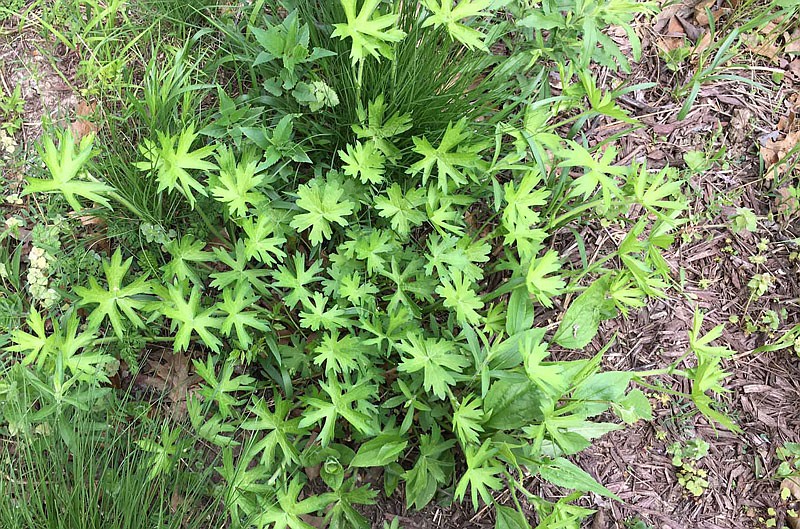Our plant this month is purple poppy mallow, or winecup. It has beautiful crimson flowers in the summer and edible leaves and roots. Kelly Kindscher, in his book "Edible Wild Plants of the Prairie," notes the starchy roots should be harvested in late summer or fall. The edible leaves are used to thicken soups and stews, similar to sassafras leaves.
Poppy mallow is not a poppy, but it is a mallow, belonging to the hibiscus family - or Malvaceae - which is represented across the world with great diversity. Poppy mallow's relatives include rose mallow - which is native to Missouri - tropical shrub-like plants like cotton, okra, roselle (used to prepare hibiscus tea) and small trees like cacao, to the large magnificent Ceiba pentandra, or Kapok tree, native to Mexico and Central America.
Purple poppy mallow is reported scattered in the wild in 15 counties north of the Missouri river in Missouri, according to the USDA National Resources Conservation Service, but has been introduced across the state for its beautiful flowers and reclining growth form. This plant will add a colorful accent to a garden while providing edible leaves in spring and early summer and edible roots in the fall or early spring. The roots look like large, light-brown carrots and taste like sweet potatoes when boiled.
There are some reports the Dakota Indians would burn the root and inhale the smoke to relieve bronchial congestion, calling it "smoke-treatment medicine." The smoke and tea made from the boiled roots were also used to reduce pain. As with so many of the native plants once consumed by Native Americans, information is limited to a few reports about their edibility and other uses. Purple poppy mallow can be propagated easily from seed and cuttings. It grows nicely at the Native Plants Outdoor Laboratory at the Lincoln University campus.
It naturally grows in dry prairies, but tolerates moist soil. Gardens and farms should be established under full sun in soil with good drainage. The flowers are very attractive and fragrant but only 2-21/2 inches in diameter. Purple poppy mallow blooms in early summer.
Poppy mallow is a host plant for the gray hairstreak butterfly (Strymon melinus), so try to avoid leaves with eggs or caterpillars when gathering the leaves in spring and summer.
It never ceases to amaze me how much there is to learn and remember about plants during my monthly research for this column. I hope the readers enjoy these findings as much as I do.
Dr. Nadia Navarrete-Tindall is Associate Professor and State Native Plant Extension Specialist for Lincoln University Cooperative Extension since 2008. She is the Director of the Native Plants Program (NPP). She can be reached at 573-681-5392 or Email:[email protected] or [email protected] or Facebook: Lincoln University Native Plants Program. The Native Plants Program offers educational workshops about native edible plants at the LU campus. Come to see us at Lincoln University Farmers Market this coming April 29 at the first market of the year. There will be native plants for sale and food samples prepared with some of the native edibles discussed in this column.


